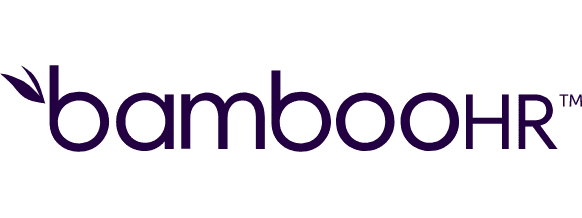Connect Noloco and monday.com integrations
Connect Noloco and monday.com with any of your favorite apps in just a few clicks. Design, build, and automate anything for your work by integrating apps like Noloco and monday.com to create visual automated workflows. Choose from thousands of ready-made apps or use our no-code toolkit to connect to apps not yet in our library.
Trusted by thousands of fast-scaling organizations around the globe





Build your Noloco and monday.com integrations.
Create custom Noloco and monday.com workflows by choosing triggers, actions, and searches. A trigger is an event that launches the workflow, an action is the event.
Adds subscribers to a board by their IDs and the board ID.
Adds a new column to a specific board.
Adds a file to a file column value.
Adds a file to an existing update.
Creates a new board.
Creates a new group in a specific board.
Creates a new collection record.
Creates subitem of an item.
Creates an item by the board ID.
Popular Noloco and monday.com workflows.
Looking to get more out of Noloco and monday.com? With Make you can visually integrate Noloco and monday.com into any workflow to save time and resources — no coding required. Try any of these templates in just a few clicks.
Create Payment in Noloco from new Stripe payments
Keep your payment records up to date by automatically creating a new entry in your Noloco app whenever a Stripe payment is received. This is perfect for building internal dashboards, reconciling transactions, or tracking customer payments alongside your other business data. This workflow watches for new payment_intent.succeeded events in Stripe and sends relevant info (amount, currency, customer email, etc.) to your Noloco app. Before using this template: Ensure your Noloco app includes a Payments table (or similar) with fields like Amount, Currency, Email, Payment Date, and Stripe ID. If needed, use Noloco AI to quickly create this table. This template was created by Noloco. For help getting started, use the in-app support chat or visit guides.noloco.io.
TRY IT ->Summarize meeting notes in Noloco with OpenAI
Get instant, high-level summaries of your meetings and auto-generated titles using OpenAI. This template watches your Noloco Meetings table, takes the call notes or transcript, and produces a short summary and a clear, descriptive meeting title. Perfect for teams using Noloco as a CRM or internal meeting tracker, this workflow ensures your records stay organized and readable — without the manual effort. Before using this template: Make sure your Noloco app has a Meetings table with a Notes or Transcript field, and fields to store Summary and Title. You can generate this structure with Noloco AI if it doesn't exist yet. This template was created by Noloco. For help getting started, use the in-app support chat or visit guides.noloco.io.
TRY IT ->Add new Slack users to your Noloco app
Streamline team onboarding by automatically adding new Slack users to your Noloco app. This template watches your Slack workspace and creates a user profile for any new human (non-bot) user with a valid email. It’s perfect for teams that want to sync Slack members into their internal tools — whether for onboarding workflows, internal directories, or user tracking. Before using this template: Make sure your Noloco app has a table (e.g. Users or Team Members) with fields like Name, Email, and Slack ID. You can generate this table easily with Noloco AI. This template was created by Noloco. For help getting started, use the in-app support chat or visit guides.noloco.io.
TRY IT ->Sync new Gmail emails to your Noloco app
Automatically create a new record in your Noloco app whenever a new email lands in your Gmail inbox. This template is perfect for keeping a searchable archive of important emails alongside your existing data — whether for client communications, support, or deal tracking. The workflow connects Gmail with Noloco, and adds each new email as a record in a table (e.g., “Emails”). You can customize which fields are saved — such as subject, sender, date, and message body — to suit your needs. Before using this template: Make sure your Noloco app has a table to store the emails. We recommend calling it Emails, with fields like Subject, From, Date, and Body. If you don’t have this yet, Noloco AI can help you generate it instantly. This template was created by Noloco. For help getting started, visit guides.noloco.io or contact us through our in-app support.
TRY IT ->Transform any document in Monday in XLSX/CSV
Extract Key Information from Files Stored in Monday.com with Koncile OCR Automatically process documents stored in your Monday.com boards using Koncile’s powerful OCR engine. Monitor items or file columns for new attachments such as PDFs or images. Send files directly to Koncile OCR and extract only the data you need — invoice numbers, dates, amounts, clauses, and more. Get back clean, structured data, ready to be used in Monday.com or exported to other systems (CSV, Excel, APIs, etc.).
TRY IT ->Search and create events in Google Calendar and Monday.com based on specific criteria
Automatically search Google Calendar for events and create corresponding items in Monday.com based on specific criteria, streamlining your scheduling and task management.
TRY IT ->Update multiple column values in Monday.com using a custom webhook
Automatically update multiple column values in Monday.com when triggered by a custom webhook, using Make's integration with Monday.com modules.
TRY IT ->Manage Monday.com items by updating column values and listing group items
Automatically update Monday.com column values and list group items by watching board items and filtering by column values.
TRY IT ->Fetch emails from Microsoft and create items in Monday.com based on the content
Automatically fetch emails from Microsoft, analyze content, and create corresponding items in Monday.com to streamline task management and organization.
TRY IT ->
FAQ
How it works
Traditional no-code iPaaS platforms are linear and non-intuitive. Make allows you to visually create, build, and automate without limits.






